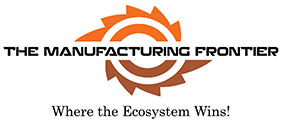“India’s headline manufacturing PMI showed a marginal slowdown in the pace of expansion in July, but with most components remaining at robust levels, the small drop is no cause for concern. New export orders remain a bright spot, rising by 1pt to the second-highest level since early-2011. The continuous increase in the output price index, driven by input and labour cost pressure, may signal further inflationary pressure in the economy.” Pranjul Bhandari, Chief India Economist, HSBC
India’s manufacturing sector continued to post impressive growth in July 2024, despite slightly softer increases in new orders and output. Key positive developments seen in the latest results included one of the fastest expansions in international sales for over 13 years and another robust round of job creation. That said, buoyant demand also exerted pressure on prices. Input costs rose at one of the quickest rates in nearly two years, which contributed to the steepest increase in selling prices since October 2013. At 58.1 in July, the seasonally adjusted HSBC India Manufacturing Purchasing Managers’ Index™ (PMI®) was little changed from 58.3 in June and indicated a substantial improvement in the health of the sector. The latest reading was above the series long-run average and one of the highest seen in recent years. Buoyant demand conditions created a ripple effect across the manufacturing industry, mainly through a substantial upturn in new work intakes. Despite slowing since June, the pace of sales growth was sharp in the context of historical data. Production volumes were raised substantially at the start of the second fiscal quarter. The rate of growth eased from June, but the respective index was nevertheless nearly six points above the average seen since the survey began in March 2005. With demand conditions remaining favourable and new orders coming in, goods producers purchased additional inputs in July. The rate of expansion was sharp as more than a quarter of panellists lifted buying levels. In turn, strong input demand drove cost inflation higher. The overall rate of increase was marked and among the fastest in just under two years. Manufacturers reported having paid more for coal, leather, packaging, paper, rubber and steel.
Comment Pranjul Bhandari, Chief India Economist at HSBC, said: “India’s headline manufacturing PMI showed a marginal slowdown in the pace of expansion in July, but with most components remaining at robust levels, the small drop is no cause for concern. New export orders remain a bright spot, rising by 1pt to the second-highest level since early-2011. The continuous increase in the output price index, driven by input and labour cost pressure, may signal further inflationary pressure in the economy.”
Indian goods producers sought to protect margins from cost increases by raising selling prices. In addition to greater fees for raw materials, firms suggested that higher labour costs and demand strength sparked upward adjustments to output charges. The rate of inflation picked up to the fastest in just under 11 years. Amid reports of strengthening demand from clients based in Asia, Europe, North America and the Middle East, Indian manufacturers experienced a robust increase in international sales during July. The overall rate of expansion was marked and the second-strongest in over 13 years. Companies continued to take on extra staff in July, with offers of both permanent and short-term contracts highlighted by anecdotal evidence. The latest increase in employment was softer than in June, though one of the strongest in the survey history. Yet, while 7% of panelists noted job creation, 92% reported no change in headcounts. While manufacturers again noted mild pressure on their operating capacities, evidenced by a marginal increase in backlogs, their suppliers were comfortably able to meet delivery deadlines. Input lead times shortened for the fifth straight month. Trends for stocks were mixed, as input inventories rose steeply and holdings of finished products fell further. Finally, the overall level of positive sentiment towards the year-ahead outlook for production was broadly unchanged since June. Growth is expected to be supported by marketing efforts and new client enquiries.
Source: S&P Global

